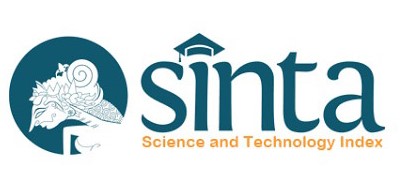Difficult Airway Management in Pediatric with a Large Cystic Hygroma Colli Undergoing One-Stage Excision Surgery
Abstract
Background: A large cystic hygroma colli is a complicating factor in airway management in pediatric. Proper preparation, planning, and anticipation can reduce the risk of complications, morbidity, and mortality during difficult airway management. The fundamental principle of difficult airway management is to maintain adequate oxygenation and avoid hypoxemia by maintaining spontaneous ventilation.
Case: A 22-month-old girl, weighing 9 kg, diagnosed with a large cystic hygroma colli who underwent single-stage excision surgery. Cystic hygroma was experienced since birth and with age, the cysts enlarge to a size of 25 x 17 x 12 cm which extends towards the face and shoulders. The patient did not experience stridor and symptoms of airway obstruction. The chest x-ray reveals no expansion of the cyst into the chest cavity and showed minimal tracheal deviation to the right. The difficult airway management was accomplished while maintaining the patient's spontaneous breathing. Sedation and analgesia obtained with intravenous administration of dexmedetomidine, ketamine, and nebulized lidocaine. A video laryngoscope is used to facilitate intubation. Awake extubation was performed after confirming that there was no risk of complications of laryngeal edema, laryngeal nerve injury, and tracheomalacia using a cuff-leak test.
Conclusion: Maintaining spontaneous breathing, optimal levels of sedation and analgesia by administering dexmedetomidine, ketamine, and nebulizing lidocaine, and the use of a video laryngoscope can provide successful management of difficult airways due to a large cystic hygroma colli in pediatric patients.Keywords
Full Text:
PDFReferences
Huang AS, Hajduk J, Rim C, Coffield S, Jagannathan N. Focused review on management of the difficult paediatric airway. Indian J Anaesth. 2019;63(6):428-436. doi:10.4103/ija.IJA_250_19
Rao KS, Shenoy T. Anesthetic management of a large cystic hygroma in a newborn. Anesth essays Res. 2015;9(2):270-272. doi:10.4103/0259-1162.156364
Lei SY. Cystic hygroma. In: Houck PJ, Hache M, Sun LS, eds. Handbook of Pediatric Anesthesia. McGraw-Hill Education; 2015.
Gurulingappa, Awati MN, Aleem MA. Cystic hygroma: A difficult airway and its anaesthetic implications. Indian J Anaesth. 2011;55(6):624-626. doi:10.4103/0019-5049.90626
Fiadjoe JE, Stricker PA, Litman RS. Pediatric Airway Management. In: Gregory GA, Andropoulos DB, eds. Gregory’s Pediatric Anesthesia. Wiley-Blackwell; 2012.
Dilek O, Yasemin G, Atci M. Preliminary experience with dexmedetomidine in neonatal anesthesia. J Anaesthesiol Clin Pharmacol. 2011;27(1):17-22.
Mahmoud M, Mason KP. Dexmedetomidine: review, update, and future considerations of paediatric perioperative and periprocedural applications and limitations. Br J Anaesth. 2015;115(2):171-182. doi:10.1093/bja/aev226
Chen K-Z, Ye M, Hu C-B, Shen X. Dexmedetomidine vs remifentanil intravenous anaesthesia and spontaneous ventilation for airway foreign body removal in children. Br J Anaesth. 2014;112(5):892-897. doi:10.1093/bja/aet490
Dsouza S, Barad D, Bharne S. Intubation using dexmedetomidine and ketamine in a child with Pierre Robin sequence. J Anaesthesiol Clin Pharmacol. 2012;28(4):545-546. doi:10.4103/0970-9185.101964
Iravani M, Wald SH. Dexmedetomidine and ketamine for fiberoptic intubation in a child with severe mandibular hypoplasia. J Clin Anesth. 2008;20(6):455-457. doi:10.1016/j.jclinane.2008.03.012
Hasanein R, El-Sayed W. The effect of nebulized lidocaine hydrochloride on emergence from sevoflurane anesthesia in children undergoing Tonsillectomy. Egypt J Anaesth. 2013;29(4):351-356. doi:https://doi.org/10.1016/j.egja.2013.06.001
Dadure C, Sabourdin N, Veyckemans F, et al. Management of the child’s airway under anaesthesia: The French guidelines. Anaesthesia, Crit care pain Med. 2019;38(6):681-693. doi:10.1016/j.accpm.2019.02.004
Wallis C, Alexopoulou E, Antón-Pacheco JL, et al. ERS Statement on Tracheomalacia and Bronchomalacia in Children. Eur Respir J. Published online January 1, 2019:1900382. doi:10.1183/13993003.00382-2019
Kuriyama A, Jackson JL, Kamei J. Performance of the cuff leak test in adults in predicting post-extubation airway complications: a systematic review and meta-analysis. Crit Care. 2020;24(1):640. doi:10.1186/s13054-020-03358-8
Wijaya Ramlan A, Ang M, Peddyandhari F. Airway obstruction after anesthesia in a 3-month-old baby with lymphangioma. Bali J Anesthesiol. 2020;4(2):81-83. doi:10.4103/BJOA.BJOA_31_20
DOI: http://dx.doi.org/10.21776/ub.jap.2021.002.03.01
Refbacks
- There are currently no refbacks.

This work is licensed under a Creative Commons Attribution 4.0 International License.









.png)

